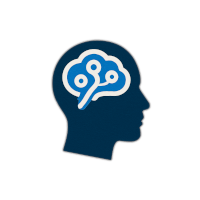AI Glossary
A comprehensive reference of artificial intelligence terms, concepts, and technologies
The challenge of ensuring AI systems act in accordance with human values and intentions.
Systematic errors in AI systems that create unfair outcomes for certain groups of people.
The field concerned with ensuring AI systems are designed and used in ways that are beneficial, fair, transparent, and respectful of human rights.
Computer systems capable of performing tasks that typically require human intelligence.
AI field that enables computers to derive meaningful information from digital images and videos.
A subset of machine learning based on artificial neural networks with multiple layers.
Generative models that learn to create data by gradually denoising random noise.
Dense vector representations of data that capture semantic meaning in a form usable by machine learning models.
AI systems designed to make their functioning transparent and their decisions interpretable by humans.
The process of further training a pre-trained model on a specific dataset to adapt it for particular tasks.
A framework where two neural networks (generator and discriminator) compete to create realistic synthetic data.
AI systems that can create new content such as text, images, audio, or video.
Neural network models with billions of parameters trained on vast text corpora to understand and generate human language.
A subset of AI that enables systems to learn and improve from experience without explicit programming.
AI techniques that enable computers to understand, interpret, and generate human language.
Computing systems inspired by the biological neural networks in animal brains.
The practice of designing and optimizing inputs to AI systems to achieve desired outputs.
Training agents to make sequences of decisions by rewarding desired behaviors.
An approach that enhances language models by retrieving relevant information from external sources before generating responses.
Training a model on labeled data to make predictions or decisions.
Neural network architecture that uses self-attention mechanisms to process sequential data.
Training a model on unlabeled data to find patterns or structure.
Specialized databases designed to store, index, and query vector embeddings efficiently.
Showing 23 of 23 terms
